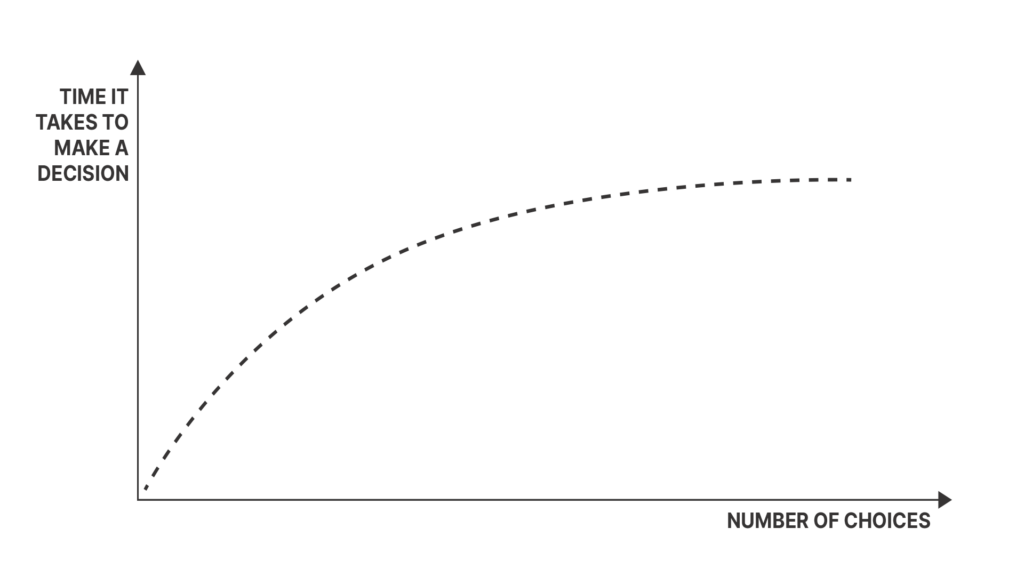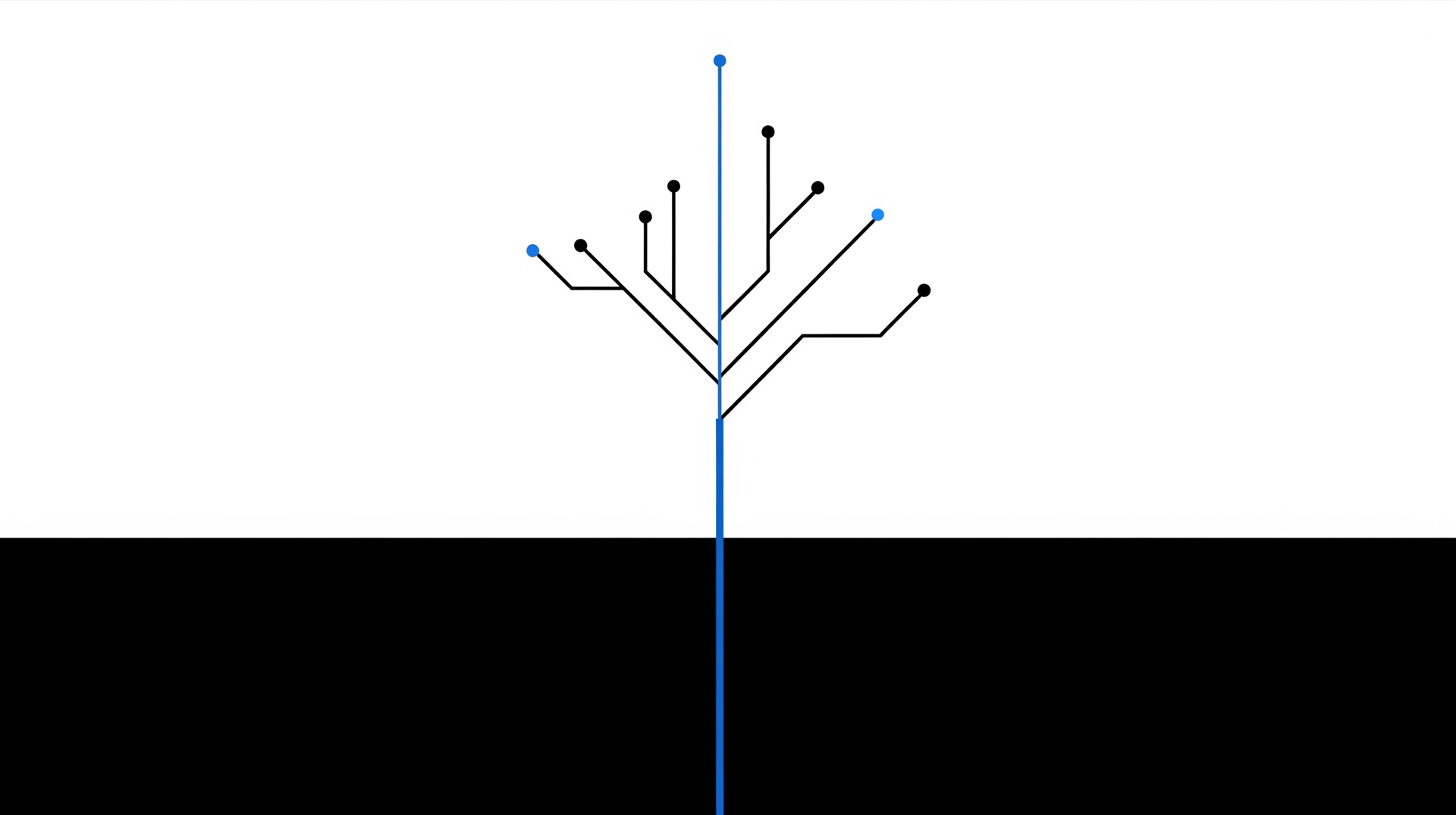THE POWER OF CHOICE IN USER EXPERIENCE DESIGN
Contemporary User Experience (UX) design requires understanding how users make decisions. Hick's Law, developed by British psychologist William Edmund Hick, demonstrates that more choices lead to longer decision times. This principle provides essential guidance for creating efficient user interfaces that reduce cognitive load and improve user satisfaction.
THEORETICAL FOUNDATION
Hick's Law originated from systematic studies conducted during the 1950s by William Hick and Ray Hyman, investigating the relationship between stimulus quantity and cognitive response time. Their research established a fundamental principle: decision-making duration increases proportionally with the number of available choices.
The research yielded a quantifiable relationship demonstrating that choice proliferation correlates with extended decision-making periods, following a logarithmic progression. This principle is mathematically expressed as:
RT = a + b log2 (n)
- RT represents total reaction time
- a & b constitute task-specific and environmental constants
- n indicates the total number of available choices

This formula demonstrates profound implications for interface design when integrated with cognitive load theory.
COGNITIVE LOAD INTEGRATION
Cognitive load quantifies the mental processing capacity required for task completion or information processing. When combined with Hick's Law principles, it reveals that choice multiplication impacts both temporal efficiency and cognitive resource allocation. Each decision point represents a processing task requiring dedicated mental resources, creating cumulative cognitive demands.
Strategic Application Example: Restaurant menu design illustrates this principle effectively. A five-item menu facilitates rapid decision-making, while a fifty-item menu extends selection time significantly. Beyond temporal considerations, the expanded menu increases cognitive load through taste preference evaluation, experiential recall, nutritional assessment, and comparative analysis processes.
UX DESIGN IMPLICATIONS
Within UX frameworks, Hick's Law functions as a strategic guideline against user choice overload. Excessive options generate elevated cognitive demands, resulting in extended decision periods, decision paralysis, or complete task abandonment.
STRATEGIC IMPLEMENTATION GUIDELINES
¬ Choice Optimization: Minimize available options when rapid user responses are critical for maintaining engagement and conversion rates.
¬ Task Segmentation: Decompose complex processes into sequential, manageable components to reduce cognitive burden and improve completion rates.
¬ Recommendation Systems: Implement strategic choice highlighting to prevent decision fatigue while maintaining user autonomy.
¬ Progressive Disclosure: Deploy incremental feature introduction to minimize initial cognitive demands during user onboarding processes.
¬ Design Balance: Maintain interface simplicity while preserving functional clarity and avoiding excessive reduction that creates ambiguity.
EXECUTIVE SUMMARY
Hick's Law, supported by decades of psychological research, provides essential insights into choice impact on decision efficiency. When integrated with cognitive load principles, it reveals comprehensive psychological implications of design choices. These combined frameworks enable the development of user-centric interfaces that optimize cognitive efficiency while maintaining functional effectiveness. Strategic application of these principles ensures sustainable user engagement through scientifically-informed design decisions that balance choice availability with cognitive accessibility.
